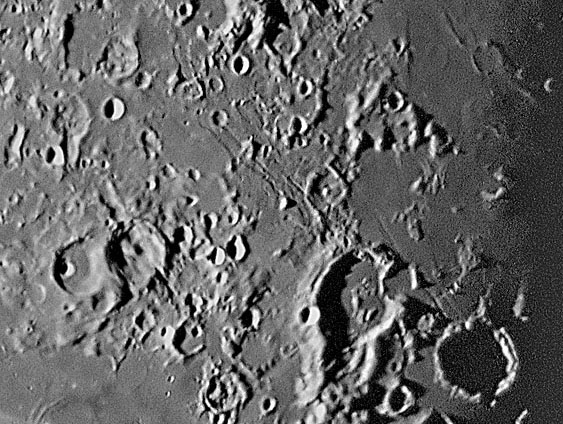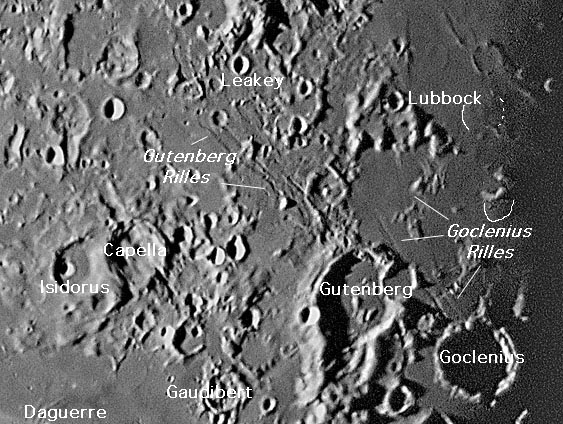Difference between revisions of "September 19, 2004"
| (14 intermediate revisions by the same user not shown) | |||
| Line 1: | Line 1: | ||
__NOTOC__ | __NOTOC__ | ||
=Colchis East= | =Colchis East= | ||
| + | <!-- Start of content --> | ||
<table width="85%" border="0" align="center" cellpadding="6" cellspacing="2"> | <table width="85%" border="0" align="center" cellpadding="6" cellspacing="2"> | ||
<tr> | <tr> | ||
| − | |||
<td width="50%"> | <td width="50%"> | ||
</td> | </td> | ||
| Line 11: | Line 11: | ||
<tr> | <tr> | ||
<td colspan="2" valign="top"><div align="center"> | <td colspan="2" valign="top"><div align="center"> | ||
| − | + | <!-- Mouse style 1 --> | |
| − | + | {{HoverImage|LPOD-2004-09-19.jpeg|LPOD-2004-09-19b.jpeg}} | |
| − | |||
</div></td> | </div></td> | ||
</tr> | </tr> | ||
| Line 19: | Line 18: | ||
<table width="80%" border="0" align="center" cellpadding="8"> | <table width="80%" border="0" align="center" cellpadding="8"> | ||
<tr> | <tr> | ||
| − | <td><div align="center" class="main_sm">Image Credit: [mailto:sl014d4025@blueyonder.co.uk Stefan Lammel]</p> | + | <td><div align="center" class="main_sm"><p>Image Credit: [mailto:sl014d4025@blueyonder.co.uk Stefan Lammel]</p> |
</div></td> | </div></td> | ||
</tr> | </tr> | ||
| Line 26: | Line 25: | ||
<table class="story" border="0" bgcolor="#FFFFFF" width="90%" cellpadding="10" align="center"><tr><td> | <table class="story" border="0" bgcolor="#FFFFFF" width="90%" cellpadding="10" align="center"><tr><td> | ||
<p align="center"><b>Colchis East</b></p> | <p align="center"><b>Colchis East</b></p> | ||
| − | <p align="left">Wouldn't it be odd if Earth's oceans had names but our land masses didn't? Pacific, Atlantic and Indian, but no Asia, North America or Africa. That is the way it is on the Moon. All the seas and various undeserving puddles (e.g. Lacus Spei) are named, but the cratered regions are anonymous. It wasn't always so. All three of the earliest lunar name-givers, Langrenus, Hevelius and Riccioli named bright regions as well as dark ones, but [ | + | <p align="left">Wouldn't it be odd if Earth's oceans had names but our land masses didn't? Pacific, Atlantic and Indian, but no Asia, North America or Africa. That is the way it is on the Moon. All the seas and various undeserving puddles (e.g. Lacus Spei) are named, but the cratered regions are anonymous. It wasn't always so. All three of the earliest lunar name-givers, Langrenus, Hevelius and Riccioli named bright regions as well as dark ones, but [[January_16,_2004|Madler]] dropped the bright area names and they have been gone ever since. I think that was a mistake so I use Hevelius' name Colchis for the mare-bounded bright region shown above. This is an area of great geologic interest yet it is seldom imaged. Stefan Lammel's image (amazingly made with a 5" Newtonian telescope) shows that this eastern side of Colchis is pocked with many 10-20 km wide craters (basin secondaries probably), a few larger craters, two rilles systems and a couple of suspect domes. The possible domes are swellings (white circles in mouseover) seen on the right along the western shore of Mare Fecunditatis. These features are visible because they are right in the terminator, but that is also a low signal to noise area. Northwest of Goclenius are rilles that appear to be concentric with the much degraded Fecunditatis impact basin, and northwest of Gutenberg are three parallel linear rilles. These rilles are parallel to the [[May_20,_2004|Messier]] and [[January_2,_2004|Cauchy]] rilles and not obviously related to any adjacent basin, but are roughly radial to Imbrium. The last major feature here is Capella (49 km diameter) and the slash that crosses it. Although this had been interpreted as a fault, it is a crater chain made by a line of secondary ejecta from the formation of the Imbrium basin. |
| − | |||
</p> | </p> | ||
| − | <p align=" | + | <blockquote> |
| + | <p align="right">— [mailto:tychocrater@yahoo.com Chuck Wood]</p></blockquote> | ||
| + | <p align="left"><b>Technical Details:</b><br> | ||
5" f6 Newtonian, Nikon 4500, Tele-Vue 15mm plossl, Celestron Ultima x2 barlow, Scopetronix Digi-T adapter; single image 1/15s @ isi800. Stefan built his telescope starting with a Takahashi primary mirror from his MT-130. He replaced the 1.5" diagonal with a 1" Protostar ULS quartz secondary with a curved vane support, and he uses a low profile JMI Mini-2 1.5" focuser in his new tube with fan cooling.</p> | 5" f6 Newtonian, Nikon 4500, Tele-Vue 15mm plossl, Celestron Ultima x2 barlow, Scopetronix Digi-T adapter; single image 1/15s @ isi800. Stefan built his telescope starting with a Takahashi primary mirror from his MT-130. He replaced the 1.5" diagonal with a 1" Protostar ULS quartz secondary with a curved vane support, and he uses a low profile JMI Mini-2 1.5" focuser in his new tube with fan cooling.</p> | ||
<p><b>Related Links:</b><br> | <p><b>Related Links:</b><br> | ||
| − | [ | + | [http://www.lpi.usra.edu/research/lunar_orbiter/images/img/iv_072_h3.jpg Lunar Orbiter IV View]</p> |
| − | <p | + | <p><b>Yesterday's LPOD:</b> [[September 18, 2004|Back to a Fractured Floor]] </p> |
| + | <p><b>Tomorrow's LPOD:</b> [[September 20, 2004|Young Fractures?]] </p> | ||
</tr> | </tr> | ||
</table> | </table> | ||
| Line 44: | Line 45: | ||
<p align="center" class="main_titles"><b>Author & Editor:</b><br> | <p align="center" class="main_titles"><b>Author & Editor:</b><br> | ||
[mailto:tychocrater@yahoo.com Charles A. Wood]</p> | [mailto:tychocrater@yahoo.com Charles A. Wood]</p> | ||
| − | < | + | <!-- Cleanup of credits --> |
| − | + | <!-- Cleanup of credits --> | |
| − | < | + | <!-- Cleanup of credits --> |
| − | + | <!-- Cleanup of credits --> | |
| − | < | + | <!-- Cleanup of credits --> |
| − | < | + | <!-- Cleanup of credits --> |
| − | + | <!-- Cleanup of credits --> | |
| − | < | + | <!-- Cleanup of credits --> |
| − | + | <!-- Cleanup of credits --> | |
</td></tr> | </td></tr> | ||
</table> | </table> | ||
| − | ---- | + | <!-- End of content --> |
| − | + | {{wiki/ArticleFooter}} | |
| − | |||
Latest revision as of 14:52, 15 March 2015
Colchis East
Image Credit: Stefan Lammel |
|
Colchis East Wouldn't it be odd if Earth's oceans had names but our land masses didn't? Pacific, Atlantic and Indian, but no Asia, North America or Africa. That is the way it is on the Moon. All the seas and various undeserving puddles (e.g. Lacus Spei) are named, but the cratered regions are anonymous. It wasn't always so. All three of the earliest lunar name-givers, Langrenus, Hevelius and Riccioli named bright regions as well as dark ones, but Madler dropped the bright area names and they have been gone ever since. I think that was a mistake so I use Hevelius' name Colchis for the mare-bounded bright region shown above. This is an area of great geologic interest yet it is seldom imaged. Stefan Lammel's image (amazingly made with a 5" Newtonian telescope) shows that this eastern side of Colchis is pocked with many 10-20 km wide craters (basin secondaries probably), a few larger craters, two rilles systems and a couple of suspect domes. The possible domes are swellings (white circles in mouseover) seen on the right along the western shore of Mare Fecunditatis. These features are visible because they are right in the terminator, but that is also a low signal to noise area. Northwest of Goclenius are rilles that appear to be concentric with the much degraded Fecunditatis impact basin, and northwest of Gutenberg are three parallel linear rilles. These rilles are parallel to the Messier and Cauchy rilles and not obviously related to any adjacent basin, but are roughly radial to Imbrium. The last major feature here is Capella (49 km diameter) and the slash that crosses it. Although this had been interpreted as a fault, it is a crater chain made by a line of secondary ejecta from the formation of the Imbrium basin. Technical Details: Related Links: Yesterday's LPOD: Back to a Fractured Floor Tomorrow's LPOD: Young Fractures? |
|
Author & Editor: |
COMMENTS?
Register, Log in, and join in the comments.





